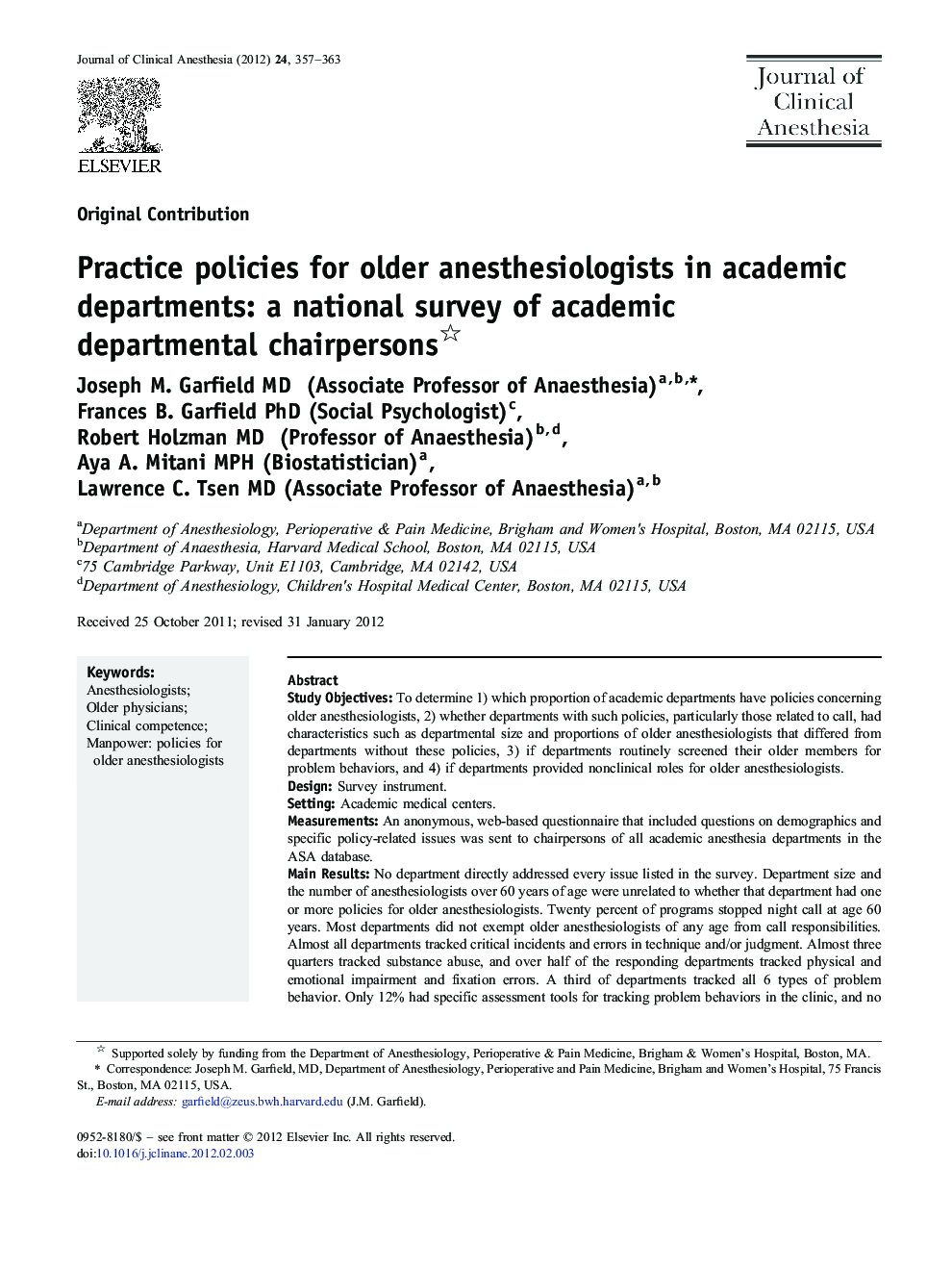| Article ID | Journal | Published Year | Pages | File Type |
|---|---|---|---|---|
| 2763113 | Journal of Clinical Anesthesia | 2012 | 7 Pages |
Study ObjectivesTo determine 1) which proportion of academic departments have policies concerning older anesthesiologists, 2) whether departments with such policies, particularly those related to call, had characteristics such as departmental size and proportions of older anesthesiologists that differed from departments without these policies, 3) if departments routinely screened their older members for problem behaviors, and 4) if departments provided nonclinical roles for older anesthesiologists.DesignSurvey instrument.SettingAcademic medical centers.MeasurementsAn anonymous, web-based questionnaire that included questions on demographics and specific policy-related issues was sent to chairpersons of all academic anesthesia departments in the ASA database.Main ResultsNo department directly addressed every issue listed in the survey. Department size and the number of anesthesiologists over 60 years of age were unrelated to whether that department had one or more policies for older anesthesiologists. Twenty percent of programs stopped night call at age 60 years. Most departments did not exempt older anesthesiologists of any age from call responsibilities. Almost all departments tracked critical incidents and errors in technique and/or judgment. Almost three quarters tracked substance abuse, and over half of the responding departments tracked physical and emotional impairment and fixation errors. A third of departments tracked all 6 types of problem behavior. Only 12% had specific assessment tools for tracking problem behaviors in the clinic, and no department used these tools specifically for older anesthesiologists. While only 17% of departments directed older anesthesiologists into nonclinical roles, older clinicians had teaching, mentoring, and administrative roles within most of the departments.ConclusionsRelatively few departments had specific policies for older anesthesiologists that addressed the issues raised in the survey. Further research is needed to determine whether departments should decrease ambiguity of their policies, formulate explicit policies for older anesthesiologists, especially in regard to call, and assess problem behaviors more directly.
